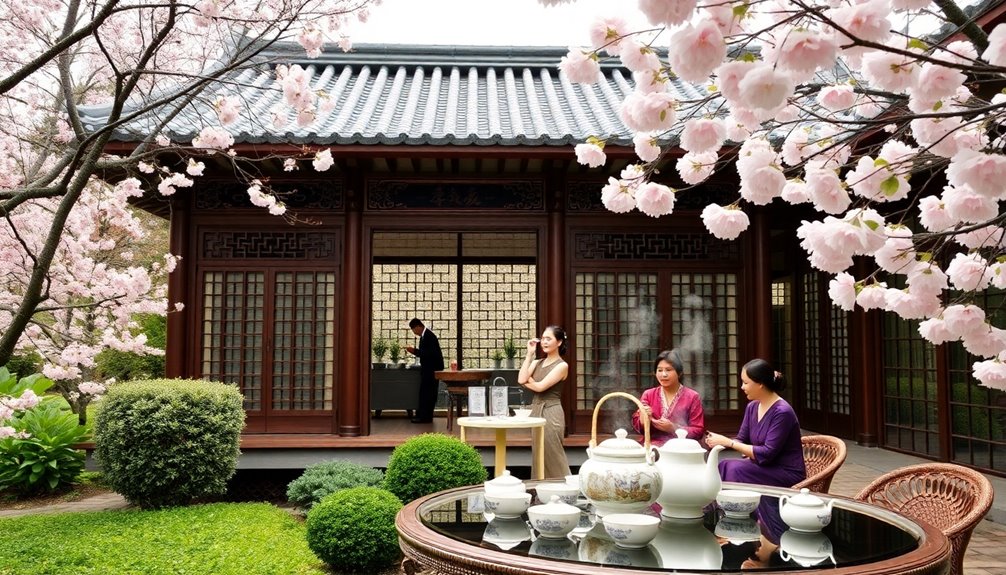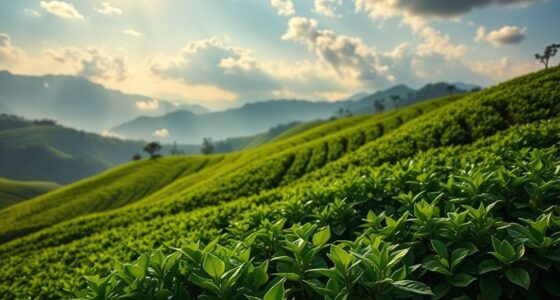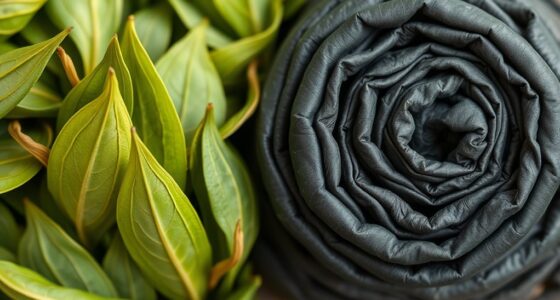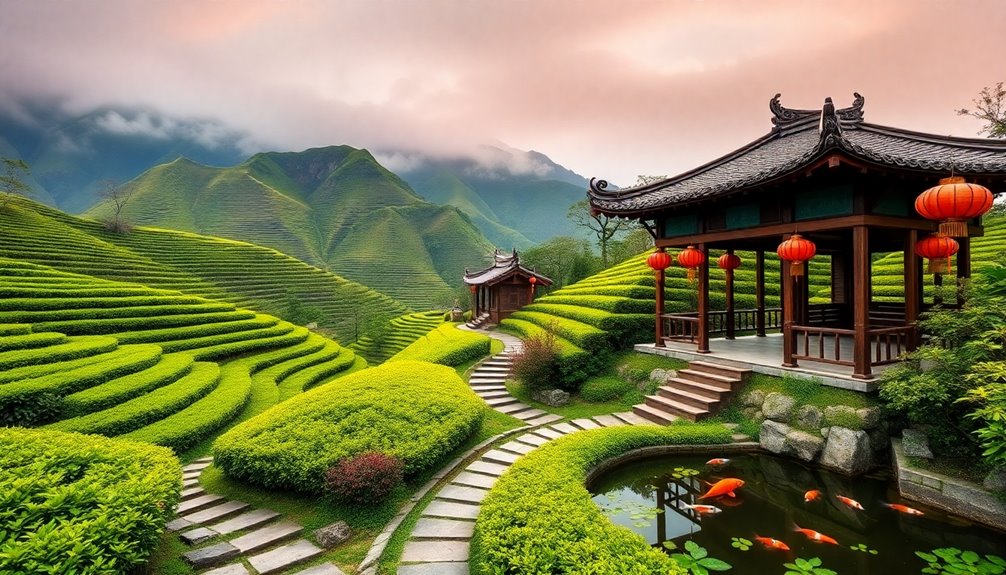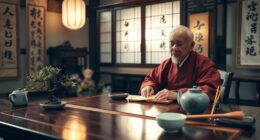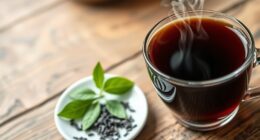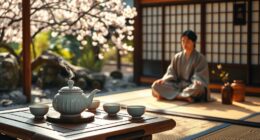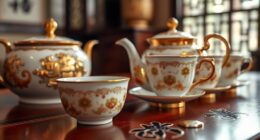Chinese tea houses preserve tradition by serving as vibrant cultural hubs where you can connect with the past. These spaces offer gatherings for storytelling, tea brewing rituals, and communal ties that span generations. You'll find intricate architecture that enhances the tranquil atmosphere, reflecting historical aesthetics. Tea houses actively promote local customs through events and shared experiences, fostering respect and hospitality. While some adapt to modern trends with unique beverages, they remain committed to traditional values and practices. Discover how these cherished institutions continue to anchor communities and safeguard tea culture, revealing even more about their significance in modern society.
Key Takeaways
- Tea houses serve as cultural hubs, safeguarding tea brewing practices and local traditions through communal gatherings and shared experiences.
- They host traditional tea ceremonies that emphasize respect and hospitality, reinforcing cultural values among generations.
- The architectural design of tea houses reflects historical aesthetics, creating an environment conducive to preserving cultural heritage.
- Regular community events in tea houses facilitate intergenerational knowledge transfer, connecting younger generations with traditional practices.
- Despite commercialization, some tea houses maintain authenticity by sourcing traditional teas and promoting educational experiences about tea culture.
Introduction
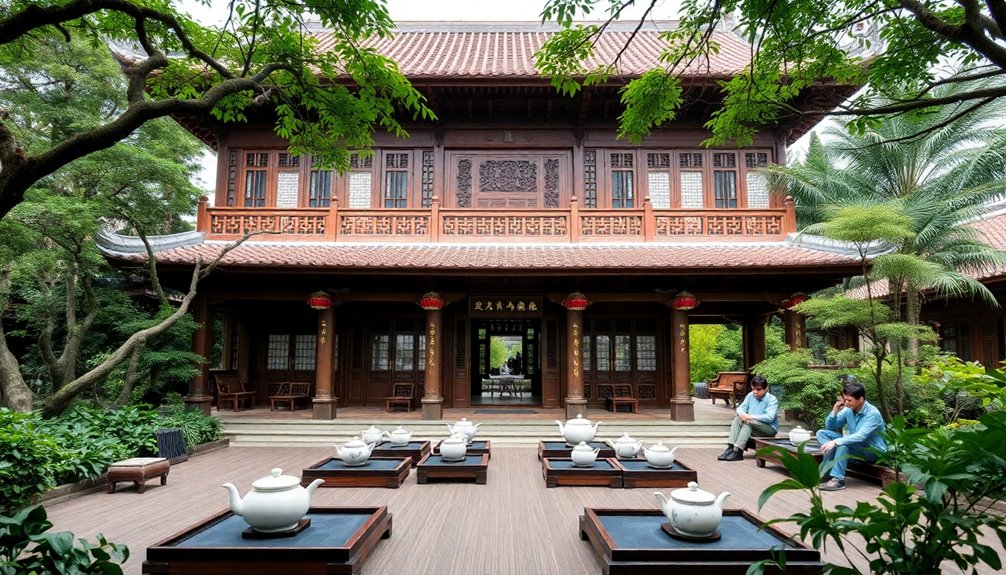
Have you ever wondered how a simple cup of tea can weave together the fabric of a community? In Chinese culture, tea houses have historically served as vital social hubs where people gather to share stories, ideas, and traditions. Emerging during the Song Dynasty, these venues became essential for civic engagement, allowing locals to discuss political and educational matters while fostering a sense of belonging.
As you step inside a tea house, you experience the ambiance that reflects the history of tea drinking in China, with traditional décor that invites relaxation and conversation.
What's fascinating is how tea houses promote intergenerational connections. Older patrons pass down traditional Chinese tea practices and etiquette to younger generations, ensuring cultural continuity.
You might find friends engaging in games like mahjong or participating in informal discussions, reinforcing social ties that contribute to the community's resilience. In these spaces, tea isn't just a beverage; it symbolizes the connection between people and their heritage.
Cultural Significance of Tea Houses

Embodying a rich cultural legacy, tea houses serve as vital anchors for local identity and community cohesion in China. These establishments have long been cultural hubs, safeguarding tea culture and local traditions, especially in urban areas like Chengdu.
You'll find that tea houses play an essential role in fostering community dialogue, offering a welcoming space for people to gather, discuss ideas, and share experiences.
Historically, they've been gathering spots for intellectuals and activists, particularly during the late Qing Dynasty and early 20th century, where political discourse flourished. The significance of tea houses became even more apparent during the Cultural Revolution when their closure underscored their role as safe spaces for expressing grievances and community concerns.
Tea houses also reinforce cultural heritage by hosting traditional practices and social activities, connecting generations through shared experiences. Their presence in every neighborhood symbolizes the resilience of local customs, fostering communal strength and maintaining continuity amid historical upheaval.
Historical Tea House Architecture

As you step into a historical tea house, you'll immediately notice the elegant wooden structures adorned with intricate carvings and sloped roofs, which showcase ancient Chinese design principles. This traditional architecture not only reflects aesthetic values but also embodies the cultural heritage of China.
Each tea house is thoughtfully designed to harmonize with its natural surroundings, often featuring gardens and water elements that enhance the tranquil atmosphere conducive to tea drinking.
The layout of these tea houses typically includes distinct areas for private gatherings and communal spaces, allowing you to enjoy both intimate and social experiences. Open-air pavilions and covered walkways are common architectural elements, facilitating airflow and creating a comfortable environment year-round.
Many tea houses are situated in historically significant buildings, preserving architectural styles from various dynasties and serving as a testament to cultural continuity. When you explore these spaces, you're not just sipping tea; you're immersing yourself in a rich history that celebrates the artistry of traditional architecture.
Each detail invites you to appreciate the craftsmanship and thoughtfulness that went into creating these serene retreats.
Community Gatherings in Tea Houses
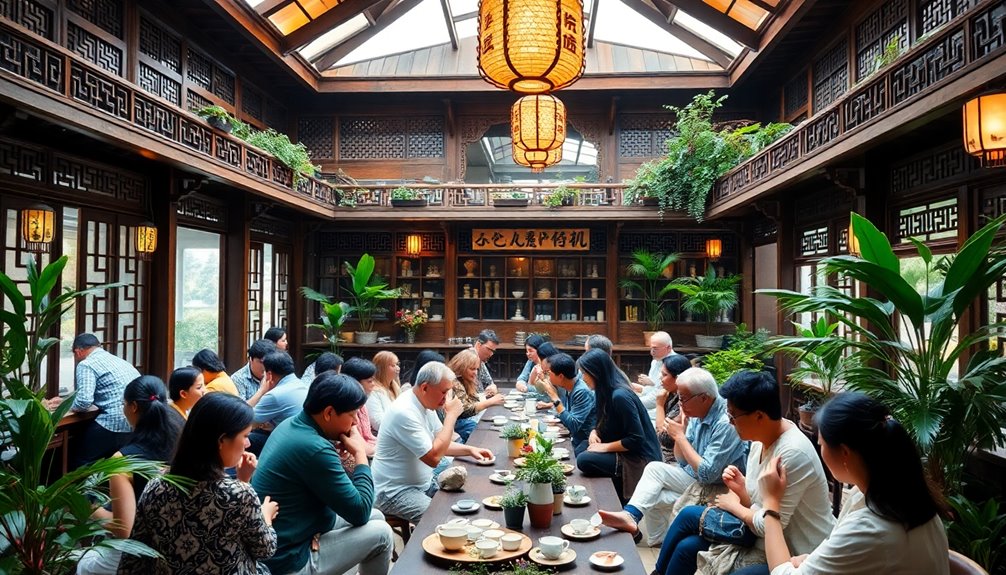
Stepping into a historical tea house isn't just about appreciating its architecture; it's also about experiencing the vibrant social life that unfolds within its walls.
These tea houses serve as vital social spaces for community gatherings, where locals come together to share stories over cups of tea. This culture of drinking tea fosters relationships and reinforces social ties, making these venues essential in maintaining local traditions amid rapid societal changes.
Historically, tea houses have been sites for political discourse and education, pivotal during events like the 1911 uprising against the Qing Dynasty.
Today, they continue to be informal communication channels, allowing residents to exchange local news and discuss national issues. Activities such as playing mahjong and ear cleaning enhance communal interaction, illustrating the importance of these spaces in preserving cultural practices.
Moreover, older generations frequently gather in tea houses, passing down traditional practices to the younger crowd.
This dynamic creates intergenerational connections, ensuring that the rich heritage of tea culture thrives. By participating in these gatherings, you're not just sipping tea; you're actively contributing to the preservation of a cherished tradition that binds the community together.
Commercialization of Tea Culture

In recent years, the commercialization of tea culture in China has dramatically transformed the landscape of traditional tea houses. With the market size surpassing $19 billion in 2021, a surge of tea brands and products has emerged.
You'll notice that many tea houses have adapted to modern consumer preferences by offering unique tea blends and specialty products, all while still embracing traditional brewing methods.
The rise of e-commerce has further expanded the reach of these establishments, allowing them to promote high-quality teas and traditional practices to a global audience.
Despite this shift, some tea houses remain committed to authenticity. They source high-quality, traditional teas and provide educational experiences about tea culture, ensuring customers appreciate the cultural heritage behind each cup.
Government initiatives are also stepping in, aiming to protect these invaluable practices amidst commercialization. By promoting sustainable tea farming and preserving traditional methods, they help maintain the integrity of tea culture.
As you explore this evolving landscape, you'll find a delicate balance between innovation and tradition, where tea houses continue to honor their rich history while embracing the future.
Practical Applications

Tea houses play a vital role in preserving cultural heritage while adapting to modern society. These establishments aren't just places to drink tea; they serve as cultural hubs that maintain traditional tea brewing practices and social customs.
When you step into a tea house, you're welcomed by decor that reflects historical aesthetics, creating an atmosphere perfect for engaging in the Chinese tea ceremony.
As a tea enthusiast, you can participate in intergenerational knowledge transfer. Older patrons often share their tea experiences and wisdom, allowing you to connect with the past while enjoying the present.
Regular community events, like tea tastings and cultural performances, further reinforce the significance of tea in local traditions. These gatherings remind everyone of the importance of cultural continuity.
Moreover, the act of serving tea in a tea house symbolizes respect and hospitality, emphasizing traditional values and social connections.
By visiting a tea house, you not only enjoy a delicious beverage but also support the preservation of cultural identity.
Conclusion
In conclusion, Chinese tea houses play a vital role in preserving tradition and fostering community. By embracing their cultural significance and unique architectural styles, they create spaces where people can gather and connect over tea. While commercialization poses challenges, these tea houses continue to adapt, ensuring their rich heritage remains alive. So, next time you visit one, appreciate the history and culture steeped in every cup, and remember that you're part of a centuries-old tradition.

